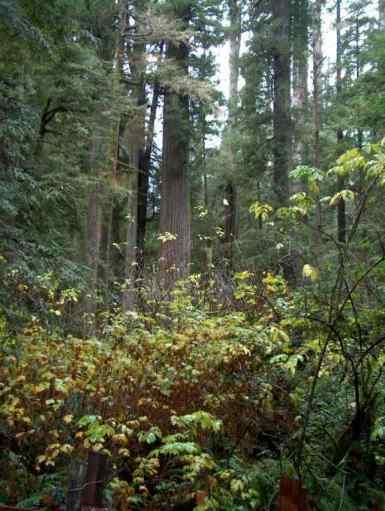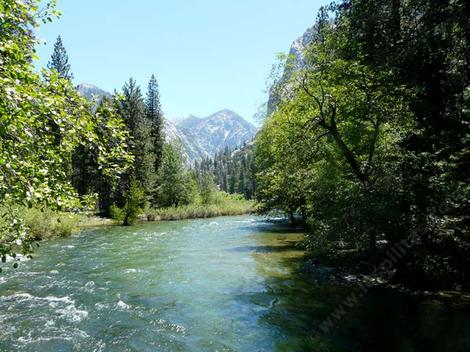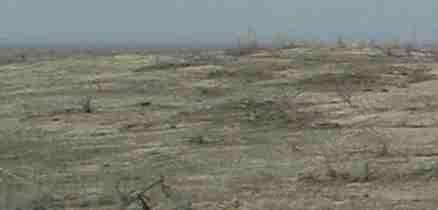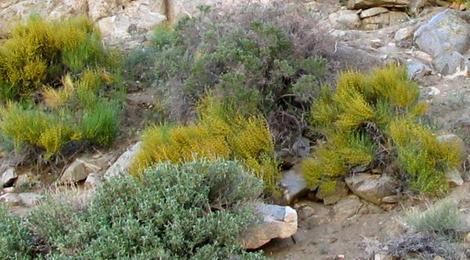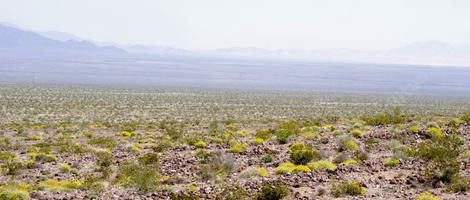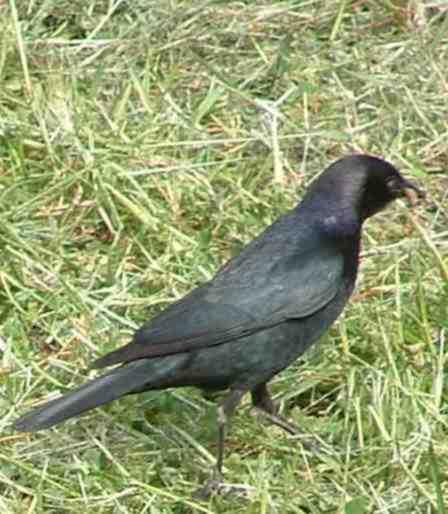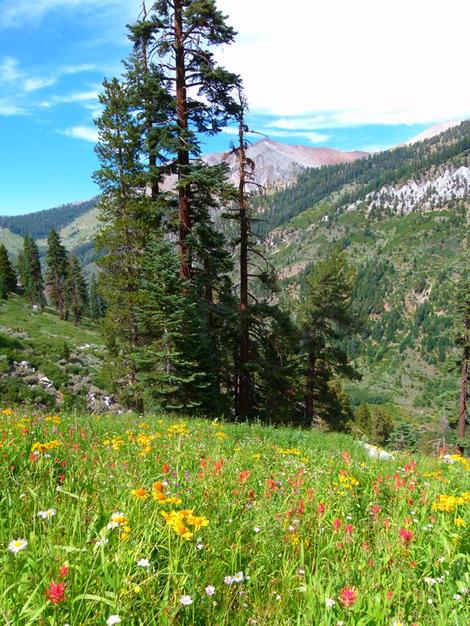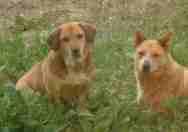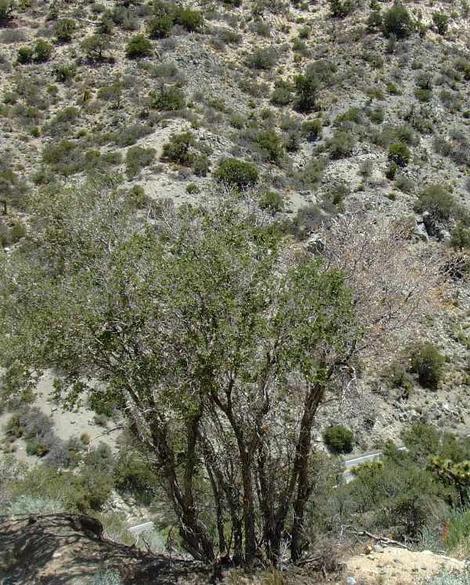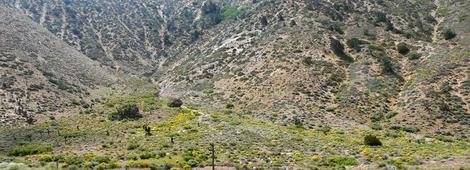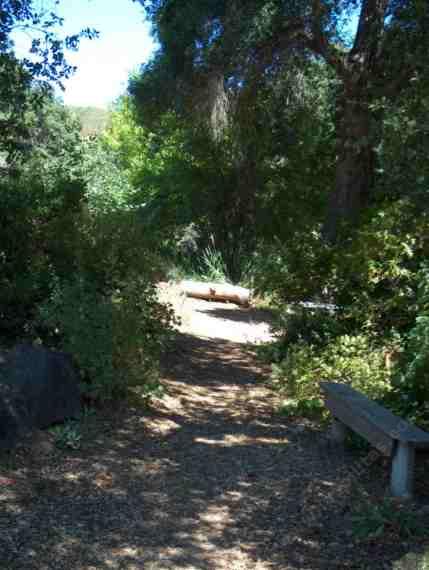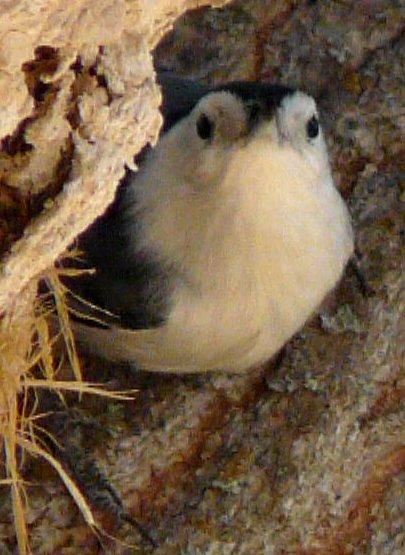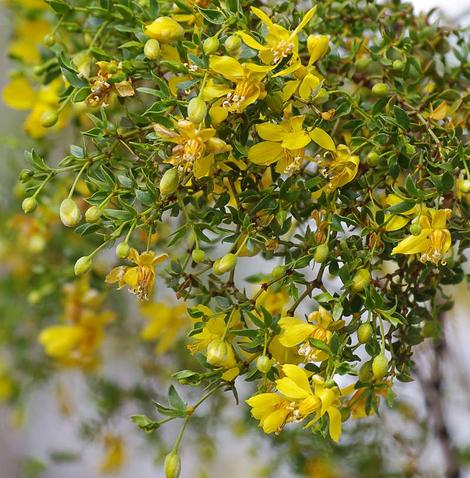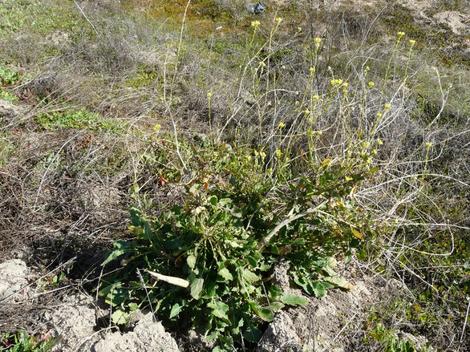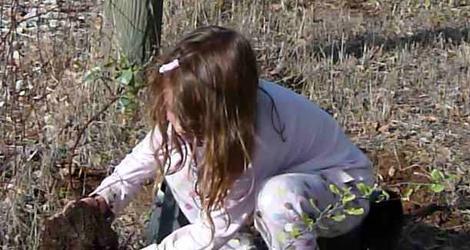Generally, plants that grow together support the same group of fungi and bacteria that suppress together the same pathogen populations. There is a grid on all mycorrhizal sites that interlinks all the plants that are coupled to it. This grid can range from a lichen to the largest trees in a forest to miles of prairie. For our purposes in this manual we only need to match plant community and the way the plants fit into the community (Stress-tolerants to Circumventors to Ruderals).
Mycorrhizal associations are the foundations of the plant community.
Plant the plant within the right plant community as we've described, and the fungal community will also be stable. This fungal-plant intermix spreads the stresses of individual plants among the other plants of the community. The seedlings are supported by the larger well-established plants of the community, as long as the community is intact and the young seedlings match the community. The areas this can include seem to be vast. The largest we've heard of to date is thousands of acres. We do not see why larger areas will not be found (as our site has the same species of fungus as the Mojave desert.) These influences may not be great over long distances (acres), but may be the difference between a healthy or stressed plant community. We know that each individual plant-fungi unit can have an effect for 50 or more feet within a matter of days. It is possible that water from a river could move up a hillside 200-300 ft. in a week or two via these interconnections.
Hopkins and Chiarrello
et. al., etc. found our hillsides
all connected with the same fungal species. Read, et. al. found
moisture and nutrition movement normal within associated mycorrhizal
plants. Plants with the wrong mycorrhiza or no mycorrhiza are excluded.
This exclusion can be very strong, killing the new plants by not
supporting the formation of mycorrhiza on their roots. The exotic
plants never
develop a 'normal' root system because they have to fight their way out
into the miss-matched cooperative. If the right mycorrhiza is present
it
will fit and immediately allow the root system to draw nutrition and
water from the community. This drawn nutrition may be slight, but from
our
experiences it allows the new plants to be on an equal level with the
established plants. The native ecosystems in California are based
upon Cooperation NOT Competition. Native plants cooperate with each
other, but they compete against alien plants. This competitive
advantage of the members of a native plant community over mismatched
plants allows community-based plants to be 'established' within weeks
of planting. The mismatched plants can be exotic plants or plants that
are members of the plant community that were planted in the wrong
location. Think of the matched sites as mutualistic,
all supporting all for the long- term betterment of all. The plant
community may be viewed as one entity, like all the organs in a body
make up an organism. (Gaia) You can't take a heart or liver out and
expect it to survive alone.
On the other hand, if the plant is planted in the wrong area, in shade
instead of sun, wet instead of dry, the
plant has to work off its own meager root system. If the plant matches
the community, you will need no water after the first few waterings
(particularly with stress -tolerant plants). If there
is no match, you will have to water the plant for years. The
mycorrhizal community is driven by the plants in the community, just as
the plants in the community are driven by the mycorrhizae. View
the bacteria (with their nanowires) as root hairs, mycorrhiza as
the roots, the roots as the thing that holds up the plant.
The association of microorganisms that you
cannot readily see is protecting the plant and providing much of the
nutrition
and moisture for the plant. The plant community matters; the associated
microorganisms that make up the cooperative community will fill in as
the plant becomes part of the community. One plant does not make
a community. Either add to the existing community or plant a
community. At least a few plants. Do not buy some
mycorrhizae/bacteria and
throw the magic potion out and expect the weeds turn into native
plants. Put back as best you can what is supposed to be there.
Perfection is not required, just do the best you can. A manzanita
native from Los Angels will probably work in San Diego, a manzanita
native from too
far off though, say Seattle, and the plant community will not
honor it.
The forest practices in the forest today are destroying the lichens, shrubs, perennials, mycorrhiza, associated microorganisms and, as a result, the trees. Our forests and deserts are declining from pollution (Arnold and also Allen). We've had customers with plants that had signs of overwatering, that had not been watered for years, but their neighbors a block away were watering a sod lawn ten minutes every day. It is your responsibility to use the least amount of water, pesticides and fertilizer you can and protect the plant community as much as possible. Your impact may be significant. Run off from lawns has polluted whole watersheds, rivers, and the bay the rivers run into.
Consider strongly the interdependence of species and set out plants as close to your plant community as possible. (Look at the declining or dead trees in an old ghost town or abandoned farm to observe what NOT to do.) This interdependence of plants in a particular plant community is the primary reason why it is so difficult to grow forest plants in the desert and the reason why many desert plants struggle when planted in chaparral or forest areas.
Remember also that most of the mycorrhizae reside in the top 2'-3' of soil and this interconnected mass of fungi and roots needs mulch (or annuals that will support the appropriate fungi) to cover the ground . Nabhan argues that many desert plants have to have nurse plants to start because the mycorrhizal inoculum is lacking without the mother plants that maintain and provide the ecology until little plants sprout. The effects have been found with plants as diverse as Saltbush (Atriplex spp.), wildflowers and Birch (Betula spp.). The mycorrhizae only grow through the soil at a rate of 2-5 ft.(75-150 cm.) per year for ectomycorrhizae and 3 ft.(100 cm.) per year for VAM (vescicular-arbuscular mycorrhizae). The friendly bacteria may only occupy a millimeter of a of soil and plant. If the community and its associates are out there, they will protect the mother plants, and provide a giant underground sponge to store nutrients and water. The fungi makes water and nutrition available to the plants through extended droughts. Plant-mycorrhizal relationships have evolved for thousands of years. In good years both reproduce and expand; in bad years, this relationship is what allows the plants to survive. Non-mycorrhizal plants put out millions of seeds, while heavily mycorrhizal plants tend toward long term survival, with a few seeds produced, but some produced each decade. Which is better, a plant that survives and shares with its pals, or a plant that aggressively seeds itself everywhere and supports pathogens that kill even itself?
On all sites if a few 'mother', 'nurse', 'companion' plants are left on the site when the site is razed, it would allow much of the community to survive, making revegetation much easier, and often make a nearly impossible job possible.
This fungal grid-associated microorganisms-plant community-animal community relationship is site-specific, soil and soil-depth specific. Every site has a slightly different community made up of different fungi and other microorganisms as the plant species, climate, and to a much lesser extent, the soil changes. The plants in each community have evolved to live with their cooperative community, their type of soil and their climate. This is a strong argument for planting site-specific plants only. But Villeneuve et al. and Widden found that the plant community was the main reason for the existence of the fungal grid. The plants within that community can have many fungal associates, and they change that association as they develop and need to adapt to changing conditions. Within the plant community, the fungi also change their DNA structure to adapt to change. What this means is that as you put the plants in the right habitat (community, soil and climate), they can connect into the community. It is better to plant the right sub-species, even if it comes from miles away, than to plant a plant from a non-compatible plant community although it is only 20 feet away. This seems so simple but often is lost in the design. The best example I can think of is where the Southern Oak Woodland interfaces with the desert. Here, the oaks (Quercus spp.) are only a few hundred feet from the Joshua Trees (Yucca brevifolia). The oaks are only found in groves; where an oak has come up away from the grove, it is small, weak and stressed. Oaks grow very poorly in the desert as they are not supported by that plant community. Most mycorrhizal/pathogen associations are as significant but we cannot see the effects except in poor growth, disease, browse damage, and poor establishment of the plants. If the grower is not using fungicides or other pathogen controls, the gallon root ball should have enough VAM or ectomycorrhizal inoculum to carry the root system until it establishes on a site, and can be used to return a damaged site to a healthier condition.
Further, many of our native plants have allelopathic tendencies and will suppress or even kill plants that are not members of their plant community. The irony of it is, the way the new plant may overcome the allelopathy is by plugging into the community grid provided by the allelopathic plant. This is dramatic in chaparral plant communities. No weeds are present, and only the associated herbs of the community come up between undisturbed climax plant species. Pathogens kill the weeds, but leave the native plants alone.
Combine plants of the same communities and you can move through adjacent communities. We've been planting by community for years and have found it to make the designs much nicer looking, easier to install and much easier to design. They 'design' themselves together and take care of themselves; the maintenance is also easier.
The plant communities tend to be mostly one type of mycorrhiza with fingers, or spots of the other mycorrhizas blended in, in the same and different soil levels. The types of plants also tend to be this way. Most perennials are linked to VAM, and the shrubs and trees within a community are usually a continuum between bacteria, VAM, ectomycorrhizae, or ericoid mycorrhizae. We usually will put spots of color with perennials and transition into trees and shrubs away from them, as the same pattern occurs in plant sizes. If you look at an oak tree it is ectomycorrhizal (or weakly VAM); under it is a plant like Wild Currant or Gooseberry (Ribes spp.) which can be ectomycorrhizal, VAM or non-mycorrhizal (sometimes on the same plant). Under the Gooseberry (and out toward the sun) will be a plant like Buckwheat (Eriogonum spp.) which is VAM that tolerates ectomycorrhizae. Each is connected in its own way. VAM to VAM, and ectomycorrhiza to ectomycorrhiza with Gooseberry as a transition plant in the middle. The same is true in plant communities; Oak is Oak Woodland (Ectomycorrhizal +weakly VAM), Buckwheat is Chaparral (VAM) and Gooseberry is in both plant communities. The same occurs with plant strategies. Stress tolerant plants are commonly the trees or large bushes, Circumventor plants are the deciduous shrubs, groundcovers and perennials, and ruderal plants are the usually short-lived water -loving perennials and annuals. As succession occurs, a plant community normally moves from R (ruderal) to S (stress tolerant).
Hey, don't worry so much, just plant back what was supposed to be there and all this will happen naturally!
Generally, matching the plant community is safer than matching mycorrhizal type. If you can tell which specific mycorrhizae are associated with your plant, match that within the right community. If the plants are grown in a seasonal climate that is as bad or worse than yours you will generally have mycorrhizal matches. That is, within a mycorrhizal species (such as Glomus mosseae) there are variants that do well only in easy sites, such as our cool coastal fog belt; inland, these mycorrhizae will not be viable (Stahl, et. al.). You can go from the harsh site to the easy, though, because a seasonal association will match. Mycorrhizal types change as the seasons and moisture levels change. The best way to describe this is as follows: a tree may support many types of birds, each helping the tree as it is living off of the tree. Hummingbirds may appear in the early spring to pollinate the flowers, at the same time feeding on the nectar in the flowers. Nuthatches may nest in the tree in the spring, eating insects living on the tree. Thrashers may nest lower in the tree, scratching in the leaf litter for bugs. Jays may eat the fruit still later, spreading and planting the seeds all over the place as they fly away with their prizes or hide them for latter. All are benefiting from the tree, but at the same time the tree is benefiting from them. The same occurs with the fungal and other microorganism companions. They will interact with the tree during different seasons, never moving away, but not constantly interacting all year. Sometimes, not the same type of fungus will be active or sometimes the companion bacteria will 'kick in', depending upon environmental conditions.
Part of the challenge is learning not just which are VAM and which are ectomycorrhiza, etc., but learning which are not antagonizing each other. Alders (Alnus spp.), for example, can be either ectomycorrhizal or VAM, but they match only 4 out of 28 species of ectomycorrhizae tried by one author and 3 out of 9 by another. From our plantings it appears some species of one type of mycorrhiza, needed by some plants, cannot survive well in areas where other types of mycorrhizae are present. That is, some mycorrhiza and/or plants will not tolerate non-native (to the site) types. Mycorrhizal potions you can buy often make the plant and the plant community weaker, not stronger. For most mainline installations you need only match plant communities. Using communities that are next to your target are acceptable if the plants move through the site as they do in the wild. If you want to use plants from other areas, put the plants in those communities together in a spot as close as you can get to that community in the wild. For difficult sites we do consultation. For most landscapes, just get as close as you can.
.."science is rife with error. Because so many people are so thoroughly schooled in the common misconceptions, however, only the most brilliantly skeptical of them will ever discover a mistake. And even then, it will likely be denied for generations to come. If the error has cultural importance too--such as the belief that emotions arise from the heart-- generations stretch into centuries." Marilyn Vos Savant, Parade Magazine, Feb. 6,1994
I think one problem people have with plants and ecology is that they cannot think long-term. Most California native plants and stress tolerant plants have long-term strategies for survival. For perennials and shrubs a lifetime of 100+ years is common. For example, Creosote (Larrea tridentata) lives 15,000 years. For trees a lifespan of 500+ years is common. The Coast Live Oak (Quercus agrifolia) trees around the nursery probably germinated during the wet periods in 1630, or 1680 (we counted the annual rings on some fallen branches). In contrast, the weedy ruderals that people plant in their yards live for only a year or two.
We normally do not see a major turn in an ecosystem, or a plant in that ecosystem for at least 10-20 years.
Why should a tree or fungus with an 8-800 times longer lifespan than ours respond instantly to our actions?
In a conventional garden with access to regular water, knowing your plant communities can reduce your problems with insects and weeds. You can modify the extreme measures we use in a restoration and combine plants of the same type communities throughout the world. The chaparral plants from around the world combine well as long as the rainfall needs are met with supplemental spring water. The forest trees can be combined in a similar manner as long as the conifers are together and the VAM- type trees are together. A desert garden can be a combination also. These all work easier though if the plants from S. Africa are planted in one clump and the ones from Chile in another, the ones from Quebec are in one forest clump and the ones from Europe are another, etc., etc. Remember, you will have problems with this scenario, but less than in a conventional garden.
REMEMBER TO KEEP THE RUDERAL plants AWAY FROM THE STRESS- TOLERANT plants with the Circumventer plants as the buffers.
For Permaculture, garden type information



